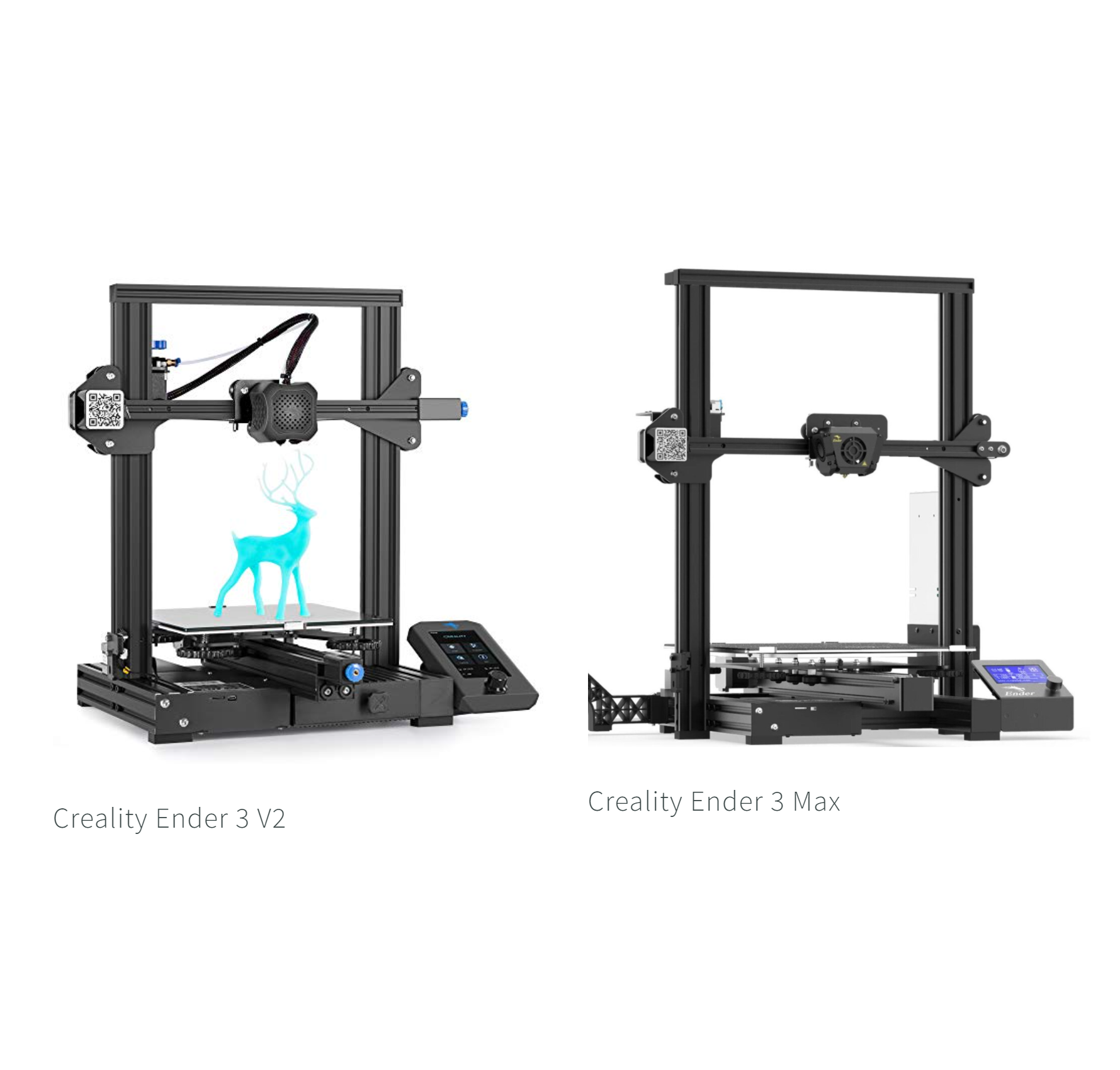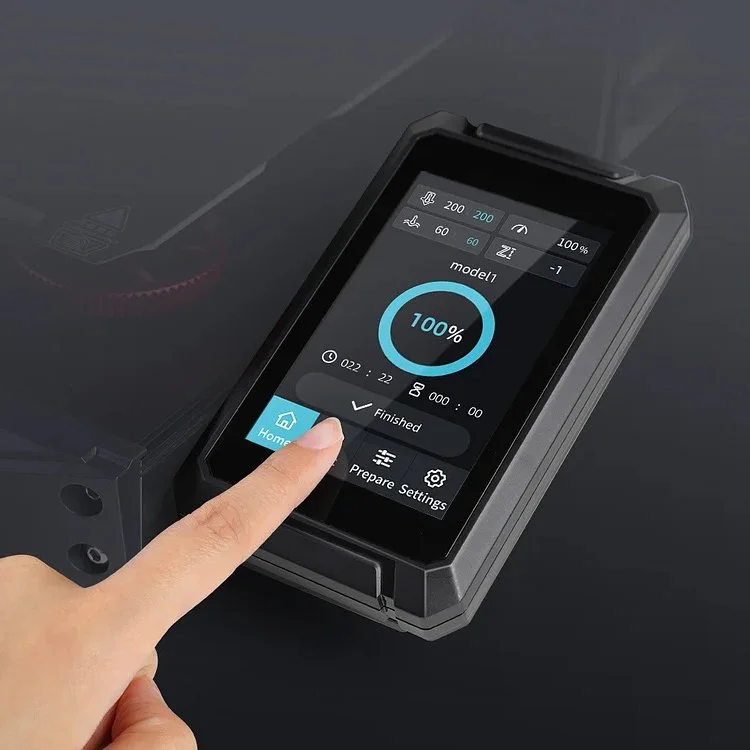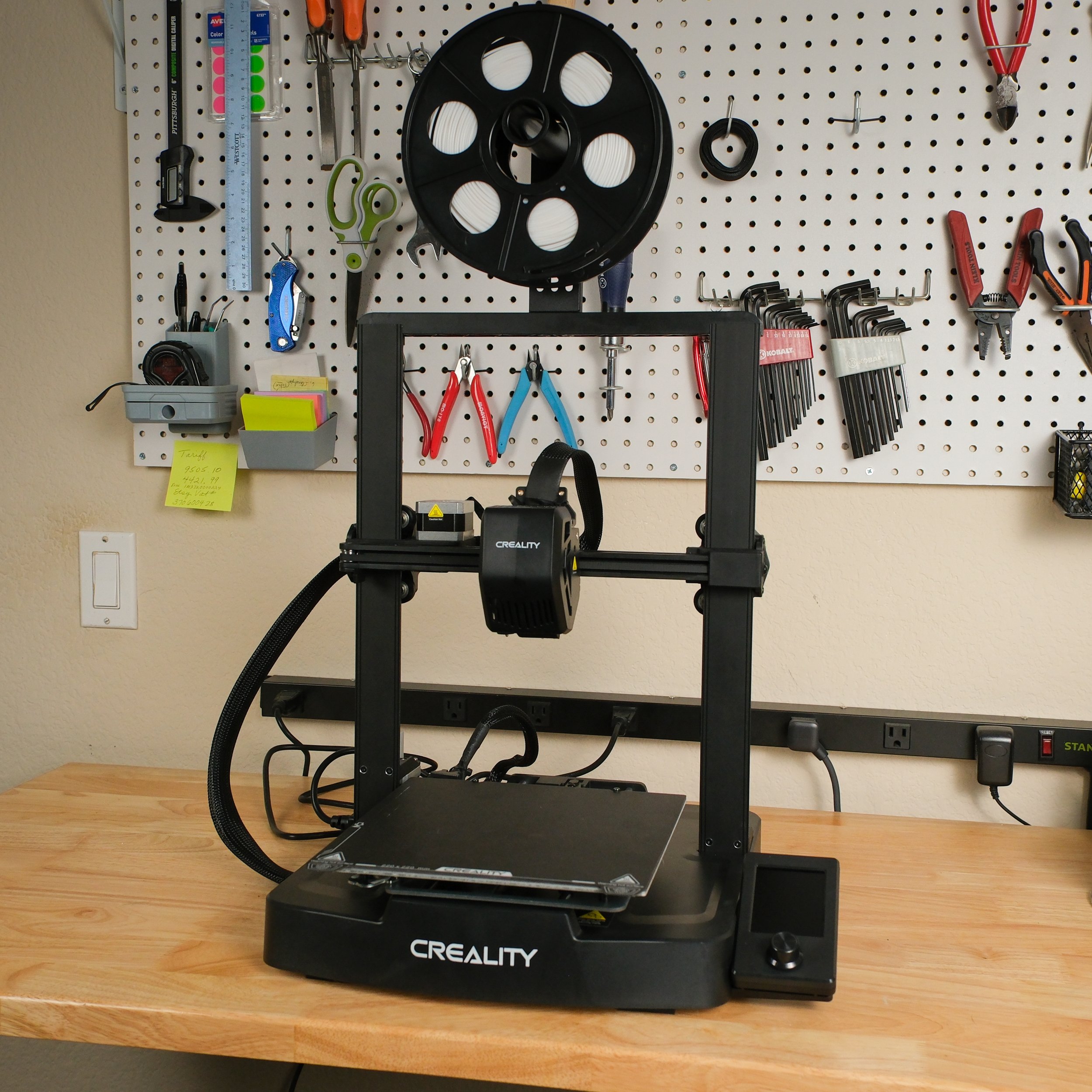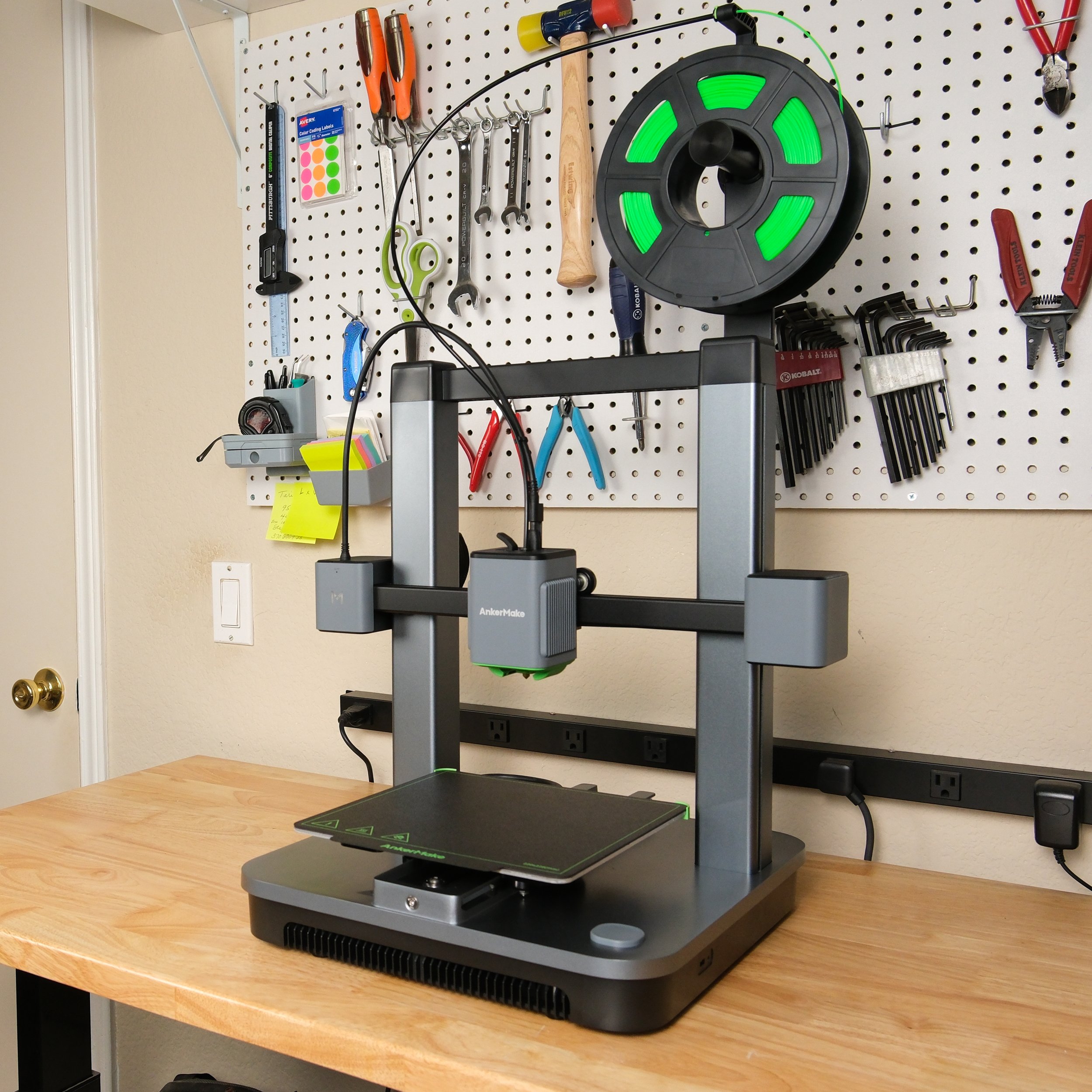The Best Beginner 3D Printers
Note: Creality Experts receives a commission for items you purchase from this page, at no additional cost to you. For more information, please see our affiliate link policy.
If you're interested in getting into 3D printing and looking for a good beginner printer, you've probably already realized that there are a lot of options to choose from. In this article, we'll show you our recommendations for the best 3D printers for beginners and help you decide which one is the right choice for you.
We primarily focus on Creality 3D printers, so many of our favorites in this category are Creality machines--for example, if you're looking for the best Ender 3 for beginners, we've got you covered. But we've tested several other 3D printer brands, and this article includes beginner 3D printers from them as well. For each of our recommendations, we’ll give you a quick overview of its features, tell you why we think it’s a good choice, and cover its pros and cons.
1. Creality Ender 3 V3 SE
The Creality Ender 3 V3 SE is our favorite 3D printer for beginners because it offers premium 3D printing capabilities and convenience features at a surprisingly low price. It features a direct drive extruder and is capable of printing at up to 250 mm/s, exceeding many other 3D printers on the market. The initial setup is simple, with assembly only taking about 15 minutes, and it includes convenience features such as automatic bed leveling and automatic Z offset calibration, making calibration easy. All of this comes at a price that is lower than most other machines, making the Ender 3 V3 SE one of the most affordable 3D printers despite its high-end features. This is really an unprecedented value in 3D printing.
The Ender 3 V3 SE has a 220 x 220 x 250 mm (8.6" x 8.6" x 9.8") maximum print size, which is the standard build volume for consumer 3D printers. It's an evolution of the well-known Ender 3, and the Ender 3 series is really a great choice for beginners. This size of printer is able to print a wide range useful and fun models, and the Ender 3 series offers affordability compared to many other printers while still offering a solid feature set. The Ender 3 V3 SE pushes that value proposition farther than ever before.
It's capable of printing all standard materials, including PLA, ABS, and PETG, and the direct drive extruder makes it able to easily print flexible materials such as TPU. In our review of the Ender 3 V3 SE, we found it to be reliable and produce high-quality prints, making it an easy recommendation for this category.
Our only complaints about the Ender 3 V3 SE are in what you give up for the affordable price point. It doesn't include a touchscreen controller or WiFi access, which makes it a bit harder to control than some other 3D printers. It's also limited in maximum print size compared to larger machines, so if you want to print large objects, you may want to spring for a bigger printer. And it doesn't have an all-metal hot end, so you won't be able to print high-temperature materials such as nylon. All of these are downsides to the Ender 3 V3 SE, but in our opinion, they won't be limiting for most users.
In short, we're very impressed by the Creality Ender 3 V3 SE and recommend it as our top choice for a beginner 3D printer. It comes in at an affordable price but doesn't compromise on features, giving you everything you need in a 3D printer.
2. AnkerMake M5C
The AnkerMake M5C provides the smoothest getting-started experience we've ever seen on a 3D printer, making it a great choice for a beginner machine. Unlike almost every other 3D printer, you can choose and print 3D models using only a smartphone app, which greatly simplifies the process of printing and makes it easy and fun to get started. After a few quick assembly steps, you can use the app to connect to the printer and initiate the automatic calibration process. Once that's complete, you'll be able to browse through the app to find a model to print and start the printing process. We've never seen anything quite this easy with 3D printing, and we found that it really made the experience fun.
The M5C isn't a toy by any means, and matches or exceeds many of the specs of other 3D printers in this list. It has the same 220 x 220 x 250 mm maximum print size as most other machines, but can print at up to 500 mm/s, which is unmatched by nearly all other printers. It also includes an all-metal hot end and a direct drive extruder, allowing it to print almost any material, including high-temperature materials such as nylon. Hardware-wise, it's a very capable machine.
The app-based controls of the AnkerMake M5C are both its biggest upside and downside. We really enjoy the convenience and ease of the wireless connection, and had no trouble using the app to control the printer. You also have the option of using AnkerMake's computer program to slice and print models wirelessly, or simply upload gcode files prepared with another slicer. However, the M5C doesn't have an integrated display or controller, and it doesn't support direct USB connection to a computer, so you'll have to use a smartphone or computer to wirelessly control it. You're also less likely to find third-party repair parts or upgrade options for the printer, meaning that you'll have to rely on Anker for continued support of the machine. However, we have no reason to doubt that Anker will continue to support the M5C, especially since it's a brand new machine. They also do have a wide range of repair parts available for purchase on their website.
The AnkerMake M5C is an appealing option if you're interested in getting into 3D printing, but don't want to tinker with your printer or install your own upgrades. But for the control you give up over the printer, what you get in return is something that is very easy to use and will have you printing models more quickly than almost any other 3D printer.
3. Creality Ender 3 S1 Plus
The Creality Ender 3 S1 Plus is a well-rounded 3D printer that offers an above-average maximum print size of 300 x 300 x 300 mm (11.8" x 11.8" x 11.8"), making it a go-to choice for beginners who want to print larger objects. With automatic bed leveling, a direct drive extruder, and the same reliability we've come to expect from Creality's 3D printers, the Ender 3 S1 Plus is a solid choice that gives you a bit of extra breathing room for larger prints. We've found this build volume to be useful for printing functional parts, such as drawer organizers and cases, as well as for large models such as cosplay pieces and wall art.
The Ender 3 S1 Plus includes a touchscreen controller, making it easy to interact with. The direct drive extruder is able to print standard materials such as PLA, ABS, and PETG, as well as flexible filament such as TPU. It also comes in at a low price given its larger build volume--while printers of this size are always going to be more expensive than comparable models with a standard build volume, the S1 Plus is one of the most affordable options in its size class.
There are two downsides to the Ender 3 S1 Plus. The first is that it doesn't support WiFi printing, which is a great feature for monitoring and remote control that we're seeing on more and more 3D printers at midrange price points. This isn't a major loss, and you could always add the functionality later with something like the Creality Sonic Pad (Amazon link), but it's a shortcoming of the printer. The other downside is simply that the Ender 3 S1 Plus is physically larger than a smaller machine such as the Ender 3 V3 SE. This is a downside to any 3D printer with a larger maximum print size, but it's worth considering whether you have the few extra inches of desk space and vertical room that a printer of this size will require.
If you need to print larger models than what a standard 220 x 220 x 250 mm 3D printer can handle, the Creality Ender 3 S1 Plus is an excellent beginner 3D printer. It provides a solid feature set and gives you that larger 300 x 300 x 300 mm build volume at a reasonable price point.
Summary
The 3D printing market is full of printers at all price points from many different manufacturers, leaving you with a lot--maybe too many--choices when choosing a beginner 3D printer. The three recommendations we've given in this article are based on our extensive experience testing and using 3D printers daily, and we've focused on printers that provide the features we think are most important for your first 3D printer. The Ender 3 V3 SE is easily the best beginner Ender 3 model right now, and the Ender 3 S1 Plus is a great choice if your ideas center around larger models. The AnkerMake M5C is a bit different, focusing more on a simple user experience with an app interface instead of the more traditional approach. All of these machines are great choices for getting into 3D printing, and are printers we'd still be happy to use today even as experienced users.
If you're interested in checking out more options, you can also view our general 3D printer recommendations, as well as our Buying Guides section, which has comparisons and information about many other 3D printer models from Creality and other brands.
Click the links below to check prices for each printer on Amazon:










